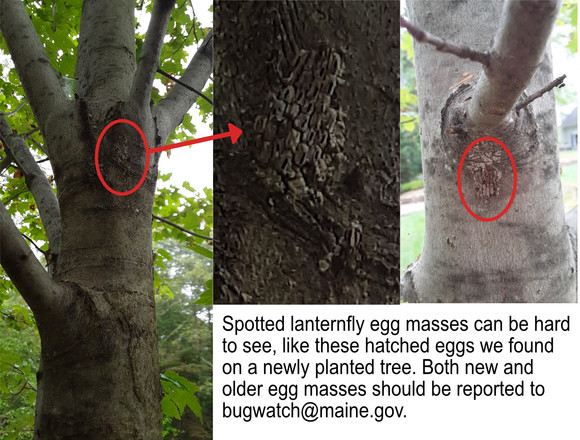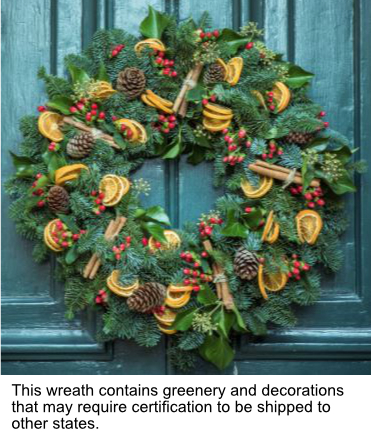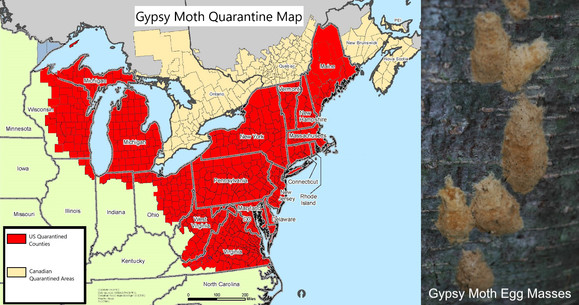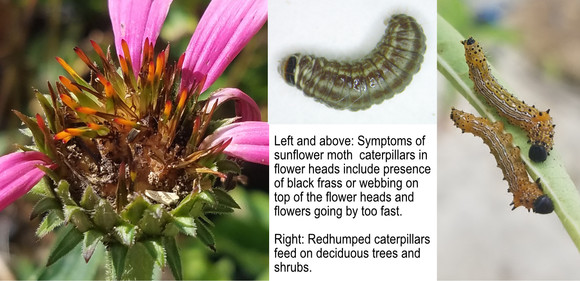Horticulture
In this issue:
 By now hopefully you have heard about spotted lanternfly (Lycorma delicatula), as the industry has been reporting on this pest since the first US find in Pennsylvania in 2014. For several years SLF stayed relatively contained to the mid-Atlantic states, making it easy to think of it as a faraway pest and someone else’s problem. However, 2020 has been a year of widespread movement for SLF. While it has not yet been found in Maine, inspectors have been following up on trace forwards of nursery stock shipments that entered the state and could potentially be infested. All it takes is one egg mass attached to a plant or hardgoods in a shipment, or a hitchhiking inseminated adult female on a vehicle for a new infestation to be started here in our state.
As research is conducted, we are learning more about spotted lanternfly. Originally, it was thought that SLF required tree-of-heaven (Ailanthus altissima) to reproduce. Not many populations of tree-of-heaven are known in Maine and there was hope that SLF wouldn’t survive here. We are now learning that SLF may be capable of reproducing on other hosts. However, SLF does favor tree-of-heaven and to aid in survey efforts, reports of this tree in Maine are helpful and can be made to invasives.mnap@maine.gov.
The list of known host plants for SLF is also growing. Recently, the list of known hosts was increased to 115 species and includes deciduous and evergreen trees, shrubs, perennials, vegetables and herbs. Some common, economically important hosts include: grape, apple, maple and birch. It is important to stay vigilant by scouting all incoming shipments of plant material for egg masses, nymphs and adults, especially plants that were grown in areas known to be infested with SLF. If you think you see any life stages of SLF, please collect a specimen or take a picture and report it to bugwatch@maine.gov.
Learn more about spotted lanternfly


With the arrival of cooler fall weather, now is the time to start thinking about the approaching holiday season. For many in Maine, holiday celebrations are not complete without decorating with Maine grown wreaths, trees and other decorative plant material, a tradition that we love to share with our friends and family across the country and the world. If your business ships wreaths and trees out-of-state, following plant health regulations will help prevent the spread of plant pests, avoid shipping delays or the destruction of plant material upon arrival at its destination.
The Horticulture Program has this advice for wreath and tree shippers:
- Import regulations can vary from state to state; shippers should check destination state regulations before sending plant material. A summary of plant health regulations relevant to holiday decorations is on the Horticulture Program website. Always contact the Horticulture Program before sending any plant material internationally.
- Carefully inspect plant material before packaging to ensure freedom from insects, egg masses or other pest damage. Look for evidence of pests that are commonly found on greens used in holiday decorations such as scales, aphids and balsam gall midge.
- Clearly label packages containing holiday plant material. Begin with the statement "Grown in Maine" followed by the county of origin and the name and address of the shipper.
- Labels should also indicate the different types of greenery, nuts, fruits and cones used to decorate the wreaths.
Changes were made last year to the federal gypsy moth program. All Maine wreath and tree shippers must comply with gypsy moth regulations when sending plant material outside the gypsy moth quarantine area (see map). Gypsy moth egg masses can be found on a wide range of outdoor items including holiday greenery. Christmas tree growers must have a compliance agreement with USDA-Plant Protection and Quarantine (USDA-PPQ) and inspect their trees for egg masses before shipment. Wreaths and other holiday decorations assembled with branches that are less than ½ inch in diameter may not require a compliance agreement, but do need to be inspected. Contact the Maine USDA-PPQ office at 207-848-0000 for more information.
|

Sunflower Moth, Homoeosoma electella - Inspectors observed sunflower moth larvae on Echinacea flower heads in nursery and landscape settings for the first time this year. This pest has been found in agricultural fields of sunflowers in the south, central and western US since the early 1900's. Many other members of the aster family are also hosts. While it is uncertain if sunflower moth can overwinter in Maine, reports show it has moved northeast as far as New Brunswick on nursery stock or warm winds during adult flight season. Symptoms of the larvae in flower heads include the presence of black frass (insect poop) or webbing on top of the flower heads and flowers going by too fast. Its presence can be confirmed by opening up the center of the flower head to find larvae tunneling inside.
Redhumped Caterpillar, Schizura concinna - Redhumped caterpillars were observed defoliating sourwood (Oxydendron arboreum), tupelo (Nyssa sylvatica) and hawthorne (Crataegus spp.) in a nursery. Redhumped caterpillars are known to be established in Maine, but these infestations were thought to have been imported on nursery stock from mid-Atlantic states. While redhumped caterpillar is not a commonly observed pest, it is recommended that nursery owners be familiar with it; defoliation can occur rapidly once caterpillars begin feeding.

|